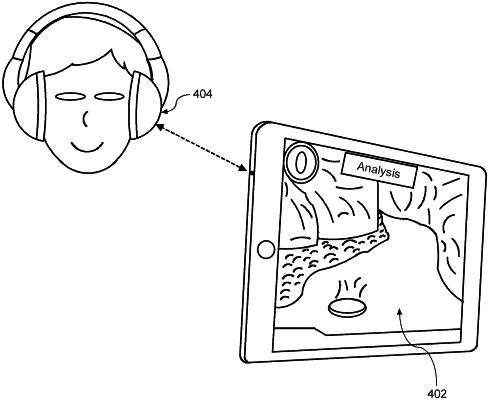| CPC A61B 5/4884 (2013.01) [A61B 5/0533 (2013.01); A61B 5/162 (2013.01); A61B 5/168 (2013.01); A61B 5/369 (2021.01); A61B 5/4076 (2013.01); A61B 5/4088 (2013.01); A61B 5/7267 (2013.01); G16H 20/30 (2018.01); G16H 20/70 (2018.01); G16H 30/40 (2018.01); G16H 40/63 (2018.01); G16H 50/20 (2018.01); G16H 50/50 (2018.01); A61B 5/021 (2013.01); A61B 5/024 (2013.01); A61B 2562/0219 (2013.01); G06N 20/00 (2019.01); G09B 5/00 (2013.01); G09B 7/00 (2013.01); G16H 50/00 (2018.01)] | 20 Claims |

|
1. An apparatus for training cognitive skills in an individual, comprising:
a user interface comprising a display and an input device;
a non-transitory computer readable memory comprising processor-executable instructions stored thereon; and
a processing unit communicatively coupled to the user interface and the non-transitory computer readable memory, wherein upon execution of the processor-executable instructions by the processing unit, the processing unit is configured to:
render a first instance of a primary task with an interference at a graphical user interface being displayed at the display of the user interface, wherein the primary task comprises one or more first computerized stimuli or interaction comprising one or more graphical objects configured to prompt a first response from the individual to the first instance of the primary task in the presence of the interference via the input device of the user interface;
wherein the interference comprises one or both of an interruptor or a distraction, wherein the interruptor or the distraction comprises one or more additional graphical objects configured to divert the individual's attention from performing the primary task;
render a second instance of the primary task without the interference at the user interface, wherein the second instance of the primary task without the interference is configured to require a second response from the individual to the second instance of the primary task;
wherein the processing unit is configured to:
(i) receive a secondary response to the interference at substantially the same time as the processing unit receives the second response; or
(ii) receive the secondary response to the interference that is an interruptor at substantially the same time as the processing unit receives the first response and not receive the secondary response to the interference that is a distraction at substantially the same time that the processing unit receives the first response;
receive data indicative of the first response and the second response; and
modify a time-varying aspect of one or both of the primary task or the interference in response to receiving the data indicative of the first response and the second response, wherein modifying the time-varying aspect of one or both of the primary task or the interference comprises modifying one or more of a speed of an object, a rate of change of a facial expression, a direction of trajectory of an object, a change of orientation of an object, at least one color of an object, a type of an object, or a size of an object.
|